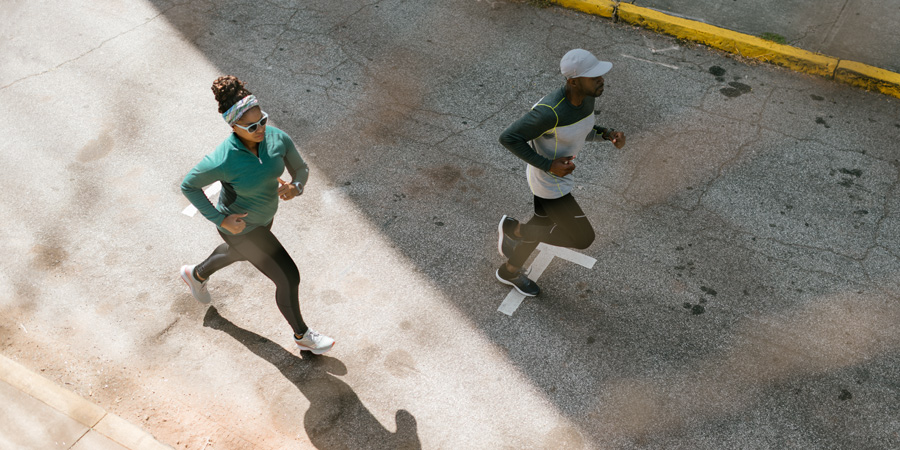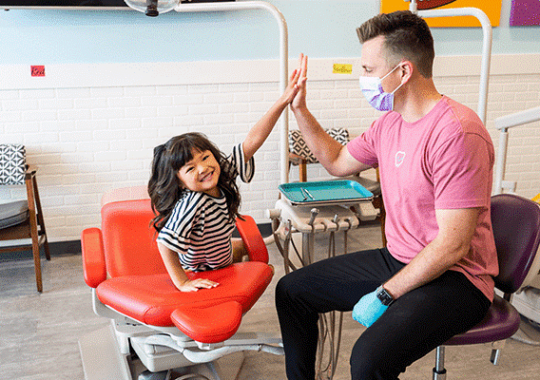While running doesn’t have to be too complicated, there are some tips that you will want to follow to become a more efficient runner.
How Should I Get Warm?
To get your body ready, you should give yourself anywhere from 5 to 10 minutes of warm up time. That way, you can get the blood flowing in your body. This will ensure your blood is circulating and delivering blood to all of your extremities before pushing yourself. You can incorporate dynamic stretching during the warmup phase. This is where you will be working your muscles and warming them up through movement. Some of the best examples of dynamic stretching involve doing knee raises, jumping jacks, and even butt kicks.
How Should I Feel While Running?
When you are just getting started, you are likely going to experience some discomfort. This is normal. However, if you begin to experience any kind of pain, you want to immediately stop running and visit your healthcare physician.
How Fast Should I Run?
If you are just getting started, try to pace yourself. A good way to measure if you’re running too quickly is by having a conversation while running. If you aren’t able to speak comfortably, you might be going too fast. If you aren’t running with anyone, you can do the same thing by talking to yourself. Try to run at a pace where you can talk comfortably. Ensure that you look after your feet with supportive running shoes at Orthos.
How Should I Breathe While Running?
Having optimal breathing is important when you are running. After all, you need to fill your lungs with oxygen which can help to deliver oxygen to your muscles. Some may breathe through their mouths and some do it through their nose. Regardless of how you like to breathe, try to find something that works for you.
Here Are 2 Different Breathing Patterns To Use While Running:
1. Using a 2-2 Pattern
This is where you take a deeper breath every two steps and you breathe out for a total of two steps. With this method, you should try to inhale through your nose and exhale through your mouth.
2. Using a 3-1 Pattern
This is another option where you would breathe in for as many as 3 steps and exhale on the subsequent step.
What Is The Proper Running Form?
When you are running, you want to utilize good form. By having good running form, you should be able to run much more efficiently and it should keep you from hurting yourself. Here are some of the best tips you should be following.
1. Arm Position
When running, you should be using your arms. Think of your arms as your power and your legs as your strength. To do this, you want to swing your arms freely at a relaxed angle around 90-degrees. While running, your shoulders should be completely relaxed. Don’t put yourself in a skating motion and try to avoid allowing your arms to cross the center of your body. Keeping your arms in this position can help you conserve your energy throughout your run.
2. Feet
Your feet are important when running. You want to try to land with each foot centered directly underneath your body. This can help you maintain optimal balance while running.
3. Body
Your body should be in a relaxed state. You want to keep your posture upright. While you are running, you should slightly tilt your upper body forward to give yourself help with your momentum. However, do not allow yourself to slouch or bend from your hips while doing this.
How Do I Cool Down?
Once you finish a run, you will want to give your body some time to cool off. You want to try to slow down gradually to do this. Avoid halting suddenly as it could increase your chances of getting hurt. Instead, you want to slow down to a jog and eventually a walk. If you are looking to cool off after a walk, you can transition to lunges.
Where Should I Run?
When looking for a place to run, the main thing you want to prioritize would be finding a place where you can be consistent with it. You want to find a place that will allow you to run without injuring yourself. However, you also want to try to vary the surfaces in which you run to give yourself more versatility. Therefore, you can consider alternating between sidewalks, grass, and even dirt.





